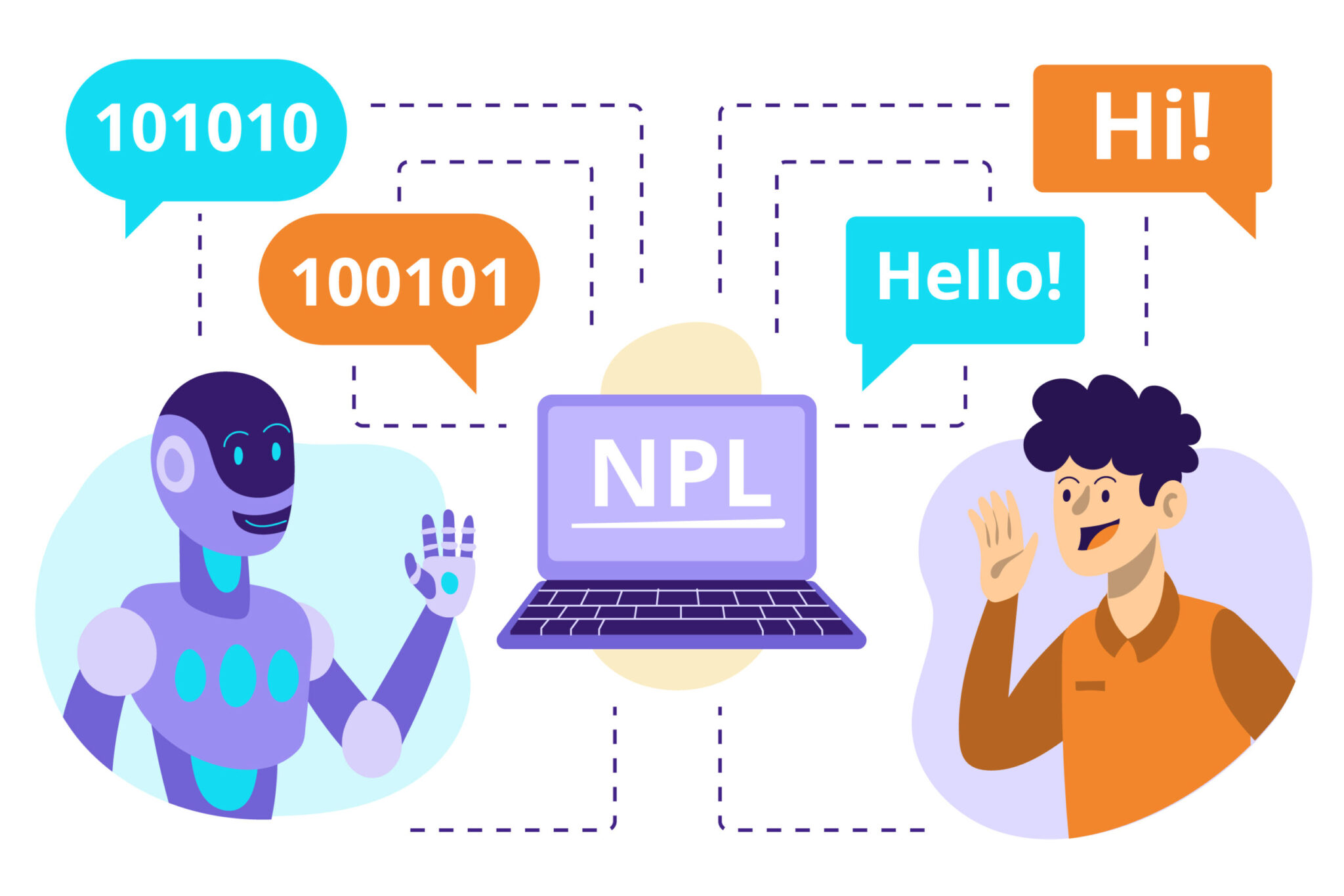the evolution of artificial intelligence in natural language processing: a comprehensive overview
INTRODUCTION
Natural Language Processing (NLP) stands at the forefront of Artificial Intelligence, revolutionizing the way computer comprehend and interact with human language. In the intricate tapestry of communication, NLP act as the weaver, empowering computers to understand, interpret and generate human-like text. It represent a pivotal intersection of linguistics and technology, leveraging algorithms, machine learning, and deep neural networks to bridge the gap between the complexities of language and the computational prowess of machines. As we delve into the realm of AI in NLP, we embark on a journey where the nuances of syntax, semantix, and context are unravelled, enabling machines to not only process but truly comprehend the rich and diverse express of human communication. The transformative impact on AI in NLP extends across various domains from chatbots and virtual assistants to language translation and sentiment analysis, ushering in a new era where the conversation between humans and machines become increasingly seamless and sophisticated. Over the year, AI has made remarkable strides in NLP, enabling machines to comprehend, interpret, and generate human-like language.
The Foundation of Natural Language Processing

Early Beginnings
The roots of Artificial Intelligence (AI) in Natural Language Processing (NLP) trace back to the early days of computer science when pioneers envisioned machine capable of understanding and processing human language. The nascent stages of AI in NLP were characterized by rule based systems and symbolic approaches that sought to codify linguistic structures. Alan Turing’s groundbreaking work in the mid-20th century laid the conceptual foundation for machines to simulate intelligent behaviour, planting the seeds for the integration for language understanding into computational systems. Early attempts to create dialogue system and language processors involved handcrafted rules, dictionaries and grammatical structures, reflecting an era where the potential of AI in NLP began to be explored. These humble beginnings sets the stages for the evolution of more sophisticated techniques, machine learning algorithms, and the eventual rise of deep learning, propelling AI in NLP towards the intricate and dynamic landscape we encounter today.
Rule Based System
In the 1969s and 1970s, researchers developed rule based system for language processing. These system relied on predefined linguistic rules to analyze and generate text. While they showed promise, their effectiveness was hindered by the inability to handle the nuances and variability of natural language. In the formative years of Artificial Intelligence (AI) in Natural Language Processing (NLP), rule based system emerged as pioneering frameworks, representing an early endeavor to imbue machines with linguistic comprehension. These system, prevalent in the nascent stages of AI, relied of meticulously crafted set of rules, heuristic and linguistic patterns to decode and generate human language. The approach sought to codify the intricacies of grammar, syntax, and semantics, providing machines with a structured framework to interpret and respond to textual inputs. Rule based system paved the way for early language processing applications, such as information retrieval and question-answering system.
The Rise of Machine Learning

Statistical Models
The advent of machine learning in the 1980s marked a paradigm shift in NLP. Statistical models, particularly hidden Markov Models and n-gram models, gained prominence or tasks like speech recognition and language modeling. In the dynamic landscape of the rise of machine learning, statistical models have emerged as instrumental tools, catalyzing a paradigm shit in how we approach complex problem-solving. Grounded in the principles of probability and data analysis, statistical models form the backbone of machine learning algorithms, enabling system to discern patterns, relationship, and trends within vast datasets. The evolution signifies a departure from traditional rule based approaches, as statistical models empowers machines to learn from data, adapt to new information, and make informed predictions. From regression analysis to more sophisticated techniques like support vector machines and random forests, statistical models have become pivotal in harnessing the predictive power of data, shaping the trajectory of machine learning’s ascendance in various domains.
The Era of Neural Networks
The 21st Century witnessed the resurgence of neural networks, fueled by advances in deep learning. Neural Networks, especially recurrent neural networks (RNNs) and long short term networks (LSTMs) revolutionizing NPL by capturing complex dependencies in conceptual data, making them well-suited for language related tasks. In the transformative narrative of the rise of machine learning, the era of neural networks has emerged as a defining chapter, propelling artificial intelligence into unprecedented realms of capability and sophistication. Neural Networks, inspired by the intricate architecture of the human brain, have become the bedrock of the deep learning, revolutionizing the field with their capacity to autonomously learn hierarchical representations from data. This paradigm shift has unlocked the potential for mechanism to grasp complex patterns, recognize intricate features, and excel in task ranging from image recognition to natural language processing.
Applications of AI in (NLP)

Chatbots and Virtual Assistants
AI-Powered chatbots and virtual assistants, like Siri, and Alexa have become an integral part of our daily lives. These system leverage NLP algorithms to understand user queries, provide information, and execute commands in a conversational manner. In the dynamic landscape of artificial intelligence (AI) and natural language processing (NLP), chatbots and virtual assistants stand out as prominent embodiments of human-,machines interactions. These intelligent agents represent a convergence of NLP algorithms, machine learning, and user interface design, offering a seamless and intuitive interface for users to engage with technology. Chatbots, design to simulate conversations, and Virtual Assistants, crafted to perform tasks and provide information, have become integral components of various applications rom customer support platforms to smart devices.



Sentiment Analysis
NLP extensively used in sentiment analysis to gauge the emotional tone of text data. Businesses employ sentiment analysis to understand customer feedback, monitor social media, and make informed decision based on public opinion. In the realm of artificial intelligence and natural language processing, sentiment analysis emerged as a profound tool, delving into the nuanced landscape of human emotions expressed through language. Also known as opinion mining, Sentiment analysis employ advanced algorithms to discern and understand the subjective tone, attitudes and feelings embedded within textual data. Thus capability holds significant implications across diverse domains, from business and marketing to social media and customer feedback.
Language Translation
AI has transformed language translation with the advent of neural machine translation (NMT). Systems like Google Translate use deep learning to generate more accurate and contextually relevant translations, breaking down language barriers on a globe scale. In the expansive realm of Artificial Intelligence and Natural Processing Language, language translation stands as a beacon of technological advancements, transcending linguistic barriers and fostering global communications. Leveraging advanced algorithms and machine learning models language translation in AI-NLP has evolved from rule based system to sophisticated neural machine translation methods. This transformative capability enables machines to comprehend and accurately translate text from one language to another, navigating the intricacies of grammar, samnatics, and cultural nuances.
Text Summarization
NLP algorithms are employed in text summarization to distill large volumes of information to concise and coherent summaries. This has application in news articles, research papers, and business reports, and enabling users to quickly grasp essential information. in the dynamic domain of artificial intelligence and natural language processing text summarization emerges as a vital tool, distilling the essence of vast contextual information into concise and coherent summaries. This sophisticated process, often categorize into extractive or abstractive methods, harnesses the power of algorithms and linguistic analysis to comprehend and condense complex content while retaining its core meaning. Text summarization in AI-NLP finds applications across diverse domains from new articles and research papers to business report and legal documents, offering a solutions to document overload by providing succinct and informative digests.
Challenges and Ethical Considerations


Data Privacy
NLP often involves processing large amount of text data, raising concerns about data privacy. Striking a balanced between extracting valuable insights and respecting user privacy is an ongoing challenge in the development of NLP applications. In the ever expanding realm of (AI) and (NLP), the paramount concern of data privacy takes centre stage. As AI algorithms increasingly leverage large amount of contextual data or training and optimization, the ethical and legal implications of handling personal information come to the forefront. The intricate interplay between the power of NLP and the need to safeguard individual privacy poses complex challenges. Striking a balance between transformative potential of AI in NLP and the imperative to protect sensitive data requires robust privacy preserving measures.
Interpretable Models
The complexity of deep learning models poses challenges in understanding and interpreting their decisions. Developing interpretable models is essential for building trust and accountability, especially in sensitive domains like healthcare and finance. In the ever advance landscape of AI and NLP, the pursuit of interpretable models has become a crucial facet, especially within intricate domains of natural language processing. As AI models, particularly deep neural networks grow in complexity, understanding their decision making processes become paramount for both practical applications and ethical considerations. Interpretable models aim to shed light on the black-box nature o certain AI system, providing clarity on how these models arrive at specific conclusions or predictions within the contexts of natural language understanding.
The Future of AI in Natural Language Processing

Continued Advances in Deep Learning
The evolution of Deep learning models is expected to continue, with innovations such as transformer architectures and attention mechanisms enhancing the efficiency of language processing tasks. Deep learning particularly through neural network with multiple layers has revolutionized NLP by enabling machines to comprehend, generate, and manipulate human-like text and unprecedented sophistication. The ongoing process in deep learning techniques, including attention mechanisms, transformer architectures, and contextual embeddings continue to refine the ability of AI to capture intricate linguistic nuances.
Zero Shot Learning
Zero Shot Learning where models can perform tasks without explicit training is a promising direction. This would reduce the need for vast labeled datasets and make NLP systems more adaptable to new domains. Unlike traditional learning approaches that requires extensive labeled data for each specific tasks, zero shot learning empowers AI models to generalize knowledge across various domains even in the absence of explicit training examples. This innovative concept holds significant promise in NLP, enabling systems to infer and perform tasks they have never encountered before.
Ethical AI Practices
As NLP applications becomes more widespread, ethical considerations will play an increasingly important role. Stricter guidelines and regulations are likely to be implemented to ensure responsible AI development and deployment. As NLP technologies continue to advance, ethical considerations become paramount in addressing concerns related to biases, privacy, and the social impact of AI applications. Ethical Ai practices in NLP involves a commitment to fairness, transparency, and accountability, ensuring that these systems operate with respect for diversity and uphold human rights.



